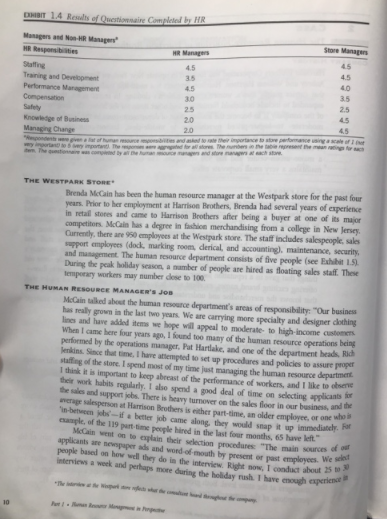Table of Content
The cost of the home generally includes not only the price you paid to the seller, but also various closing costs and settlement fees. You can’t include the principal part of your mortgage payments because this isn’t technically an expense. You’re simply returning the money that you borrowed to your lender. Mortgage interest and insurance can be deducted, however, subject to the necessary square footage calculations. WASHINGTON — During Small Business Week, September 22-24, the Internal Revenue Service wants individuals to consider taking the home office deduction if they qualify. The benefit may allow taxpayers working from home to deduct certain expenses on their tax return.

Learn how to file taxes for a deceased loved one with H&R Block. You must meet or be exempt from all state licensing or certification requirements. If you don’t meet the requirements or aren’t exempt from them, you must still meet the exclusive-use test.
Additional resources
This would be the case if you paint that spare room you’re using for an office and you don’t use the space for any purpose other than work. You get a $1,000 deduction if you spend $1,000 on the paint job. Direct home office expenses relate to your actual workspace and are fully deductible.
If you have $500 of business income and $500 of business expenses, your home office deduction would be $0. For example, if you have $500 of business income and $400 of business expenses, the most you could get from your home office deduction is $100. This content has been reviewed by an Enrolled Agent with the IRS — the highest credential awarded by the agency. Enrolled Agents are empowered to represent all taxpayers before the IRS, on all types of tax-related matters.
Simplified home office method
You have suitable space to conduct administrative or management activities outside your home. However, you choose to use the home office for those activities. You conduct administrative or management activities at places that aren’t fixed locations of the business, like in a car or a hotel room. To write off your home expenses, you’ll need to put the total from line 36 of your Form 8829 on line 30 of your Schedule C.
Home office expense is only available on Schedule C (self-employment). Farms and rental properties do not have “home office expense” as a line item. Neither do S-corps, Partnerships, or C-corps.
What Qualifies As a Home Office?
You might also have a number of other business expenses and assets you can depreciate or claim as Section 179 deductions. You can also use the regular deduction method for calculating your home office deduction. This type of deduction does require you to track and determine the actual expenses you’ve incurred for your home office. These expenses may include mortgage interest, insurance, utilities, repairs, and depreciation.

You can multiply the cost of electricity, gas, trash removal, and cleaning services by your percentage of business use. Your telephone wouldn’t be included because the first telephone line to your house is considered to be for personal use. But you can claim a deduction for a second line that’s used exclusively for business on Schedule C. Be careful not to deduct this one twice if you itemize your deductions on your personal tax return.
Indirect Home Office Expenses
Watch our quarterly webinar and keep up to date with the latest research into the finance, risk and regulatory issues impacting financial services professionals in APAC. Casualty losses imply a sudden, accidental, or unusual loss. Casualty losses do not include damage from pets or progressive losses to property such as damage from erosion, termites or other insects, wood rot, and similar slow-moving causes. If you began using your home office before May 13, 1993, continue using the depreciation method that you originally started out with.

If your home helped you make money, then you can deduct a portion of the expenses from your profit. However, if you did not make any money you do not get to deduct any home office expenses. You can only deduct home office expenses from a profit. As the IRS sees it you would have lived there and paid for it anyway, even if you did not have a business. Second, you have to have a business or be self-employed to some degree.
Secondly, business casualty losses are measured using slightly different rules. From this you subtract any insurance reimbursement, to arrive at the amount of loss. If the reimbursable amount has not been determined by the time you need to file your tax return, compute your losses using the amount that you reasonably expect to eventually recover from the insurance company.

The IRS introduced a second, much simpler method of calculating your home office deduction beginning in tax year 2013. You're up to a deduction of $4,080, and you haven't even included your renters' insurance or gas bill yet. Deducting, or being reimbursed for, a home office today will no longer turn around and bite you in the arse when you sell your personal residence, as had been the case in the past.
Taking a deduction for depreciation can have tax consequences when you sell your home later, so be sure to carefully consider whether a home office deduction for this expense is right for you. Some indirect expenses are pretty common and are subject to this equation, along with some other factors that can affect the amount you can deduct. The $1,500 maximum for the simplified deduction generally equates to about 35 cents on the dollar for most taxpayers, said Markowitz.

You might also want to consider how long you expect to be able to use the equipment before it must be replaced. If you think it will only last a year or two, it might be better to use the Section 179 deduction for that particular asset. You can choose to depreciate or use section 179 separately for each asset you purchase.
It is no longer allowed for employees under TCJA. You would apply your percentage rate to each of these expenses, then tally them up to arrive at your deduction. Whether you’re deducting or having your professional expenses reimbursed, you can lighten up the financial burden required to set up a workable and productive office space in your home. To get started, all you need to do is know your legal rights, prepare your deduction plan ahead of tax season, and leverage your employer’s reimbursement policy as best you can.
If you start or stop using the office during the year, the percentage of time that the office is used will also be a factor. If you have a business, and you made a profit, and you primarily work from home in a separate office space, then you can deduct your home office expenses or Schedule C or form 8829. Home office expense cannot take you into a loss for your business.

No comments:
Post a Comment